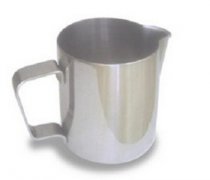Coffee training knowledge-Coffee bean grinding terminology
Caffeine: caffeine is the most eye-catching of all the ingredients in coffee. It belongs to a kind of phytoxanthine (animal muscle component). It has the same properties as theophylline contained in cocoa, green tea contains the same theophylline, and the percentage of reduction after baking is very small. Caffeine has a very extensive effect. It will affect various parts of the human brain, heart, blood vessels, gastrointestinal tract, muscles and kidneys. The right amount of caffeine will stimulate the cerebral cortex, promote sensory judgment, memory and emotional activity, and make the myocardial machinery more active. Vasodilation enhances blood circulation and improves metabolic function. Caffeine can also reduce muscle fatigue and promote digestive juice secretion. In addition to this, because it also promotes the kidney function to help the body expel excess sodium ions (chemicals that hinder the metabolism of water molecules), caffeine will not accumulate in the body like other narcotic and excitant substances (narcotic drugs, paint solvents, stimulants, etc.) and will be excreted in about two hours. The biggest bitterness of ─ in coffee flavor is caused by caffeine.
Tannic acid: after extraction, tannin will turn into a yellowish powder, which can easily blend into water. After boiling, it will decompose and produce pyrosylic acid, which will make the coffee taste worse. If the coffee is soaked and left for several hours, the color of the coffee will become stronger than when it was just soaked. And it is also less tasty, so there is the saying that "it is best to drink it as soon as possible."
Fat: the fat contained in coffee plays a very important role in flavor. It is found that there are many kinds of fat in coffee, the most important of which are acidic fat and volatile fat. Acidic fat means that there is acid in fat, and its strength varies with different types of coffee, and volatile fat is the main source of coffee aroma. Once the fat contained in roasted coffee beans comes into contact with the air, chemical changes may occur and the taste and flavor will become worse.
Protein: the main source of calorie is protein, and like dripping coffee, most of the protein will not dissolve out, so no matter how much coffee you drink, the nutrition you get is limited, which is why coffee will become a sacred food for dieters.
It is said that Beethoven grinds sixty coffee beans every morning and then brews the coffee while grinding the coffee and enjoying its aroma. And then experience the fun excitedly. According to its size, the grinding methods of coffee beans can be divided into three types: rough grinding, medium grinding and fine grinding. Use the appropriate grinding method according to the coffee utensils. There is also medium fine grinding or very fine grinding (powdered coffee powder) which is finer than fine grinding. The timing of grinding coffee beans is before brewing coffee, only the need for grinding is the top grade. After the coffee bean is ground into powder, its surface area increases and absorbs moisture, which is easy to oxidize. In short, with the passage of time, coffee powder also plays a role of deterioration to damage the flavor. And after the ground coffee beans are placed, the carbon dioxide retained inside the beans will be lost together with the aroma. In this way, when the coffee powder is extracted and filtered, the coffee powder should be expanded without expansion, and you can't make delicious coffee anyway. The secret is to consider grinding and homework consistently, so brewing coffee is the most delicious and mellow.
Fine grind
◎ fine grinding (fine particles, the same size as sugar)
Medium grind
Grinding in ◎ (particles the same size as a mixture of granulated sugar and coarse white sugar)
Regular grind
◎ rough grinding (coarse particles, the same size as coarse sugar)
Important Notice :
前街咖啡 FrontStreet Coffee has moved to new addredd:
FrontStreet Coffee Address: 315,Donghua East Road,GuangZhou
Tel:020 38364473
- Prev

Coffee training knowledge the picking of coffee trees
Coffee trees usually blossom in 3-4 years, about 2-3 months a year, and their appearance and smell are similar to those of jasmine. when they bloom, they grow in clusters on the branches and bloom for 3-5 days. After the flowers bloom, they bear small green fruits, which ripen and turn red into ripe fruits that can be picked after a few months. The skin of ripe fruit is red. Because its shape and color are similar to cherries, ripe coffee fruit is called coffee cherry in many places.
- Next

Coffee training techniques Guide to Coffee milking
Have you ever had such a cappuccino? It looks like a cup of art and tastes like silk. If you've ever had a cappuccino like this, I think it's probably hard for you to drink that bubbly, fluffy cappuccino. So what makes a real cappuccino so delicious? Of course it's the skill of a barista. The skill of milking is not so tolerant.
Related
- Beginners will see the "Coffee pull flower" guide!
- What is the difference between ice blog purified milk and ordinary milk coffee?
- Why is the Philippines the largest producer of crops in Liberia?
- For coffee extraction, should the fine powder be retained?
- How does extracted espresso fill pressed powder? How much strength does it take to press the powder?
- How to make jasmine cold extract coffee? Is the jasmine + latte good?
- Will this little toy really make the coffee taste better? How does Lily Drip affect coffee extraction?
- Will the action of slapping the filter cup also affect coffee extraction?
- What's the difference between powder-to-water ratio and powder-to-liquid ratio?
- What is the Ethiopian local species? What does it have to do with Heirloom native species?

